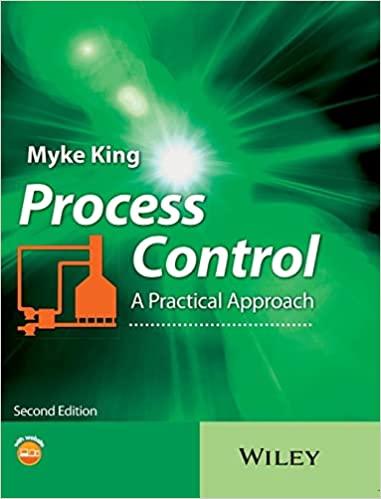Question
Procedure In this virtual lab, found at http://chemcollective.org/activities/autograded/124, you will perform a dilution and do a titration to determine the concentration of a strong acid.
Procedure
In this virtual lab, found at http://chemcollective.org/activities/autograded/124, you will perform a dilution and do a titration to determine the concentration of a strong acid.
Part 1: Dilution
- Click on the solutions tab and select the 10M NaOH. This should make a flask appear on the bench space.
- 10M NaOH is much too concentrated to use for this titration, so we need to dilute it to approximately 5.00 M using the dilution equation:
M1V1=M2V2
- You need to make 100.0 mL of the dilute base. Fill in the table in the first part of your data sheet to calculate the amount of concentrated base needed. (Hint: you are solving for the italicized part of the equation on the data sheet)
- Click on the glassware tab and choose a 100 mL volumetric flask.
- Drag the NaOH flask to the volumetric flask and type in the amount you calculated and click pour to add it to the volumetric flask. Then click the x to close the small dialog box and put down the NaOH.
- Back in the stockroom tab, choose the deionized water. Fill the volumetric flask up to 100 mL with the deionized water.
Part 2: Titration
- In the stockroom, click on the flask of unknown acid to add it the desk top.
- Choose the buret from the other glassware. Fill it up with 50 mL of your dilute base.
- Now take the unknown acid from the stock room.
- Choose the phenolphthalein and add 1.00 mL to the acid. This step is critical and the experiment will not work without it. The phenolphthalein turns pink when the titration is complete.
- Click on the buret and drag it onto the unknown acid. Record the initial volume on your data sheet.
- Instead of adding exact amounts from the buret, choose the realistic option. The longer you hold the pour button, the more NaOH will pour from the buret. As you get closer to the equivalence point, you will need to add more slowly. Click quickly to add one drop at a time.
- Stop adding NaOH as soon as the acidic solution in the flask turns pink. The color change means you have reached the equivalence point where moles of NaOH = moles of HCl.
- Record the final volume of NaOH on your data sheet. Calculate the amount of NaOH used to neutralize the acid.
- Now calculate the molarity of the unknown acid. You can type this value into the space at the bottom of the screen to check your answer. If you are correct, take a screen shot of the lab showing that you were correct and attach it to your lab.
- If you were not correct, you can make two more attempts to get the correct value. Recording your data in the data table as you go. Most titrations take at least two trials to get correct. One trial to get a rough idea of the concentration and a second more precise trial.
Data for Titration of a Strong Acid
Part 1: Diluting the base:
| M1 | V1 | = | M2 | V2 |
|
|
|
|
| |
| Concentration of concentrated NaOH | Volume of Concentrated NaOH needed | Concentration of dilute NaOH | Volume of dilute NaOH |
| 1 | 2 | 3 | |
| Volume of HCl Added | 100.0 mL | 100.00 mL | 100.00 mL |
| Initial Volume of NaOH |
|
|
|
| Final Volume of NaOH |
|
|
|
| Volume NaOH Added |
|
|
|
| Molarity of NaOH (calculated in part 1) |
|
|
|
| Moles NaOH Used |
|
|
|
| Show an example calculation for moles of NaOH used.
| |||
| Moles of HCl Consumed* |
|
|
|
| Molarity of HCl |
|
|
|
| Show an example calculation for molarity of HCl. | |||
Questions
- How would lab be easier in a real laboratory setting?
- When you use too much NaOH, is the calculated concentration of HCl too high or too low?
- What is the pH of the solution at the equivalence point?
Step by Step Solution
There are 3 Steps involved in it
Step: 1

Get Instant Access to Expert-Tailored Solutions
See step-by-step solutions with expert insights and AI powered tools for academic success
Step: 2

Step: 3

Ace Your Homework with AI
Get the answers you need in no time with our AI-driven, step-by-step assistance
Get Started


